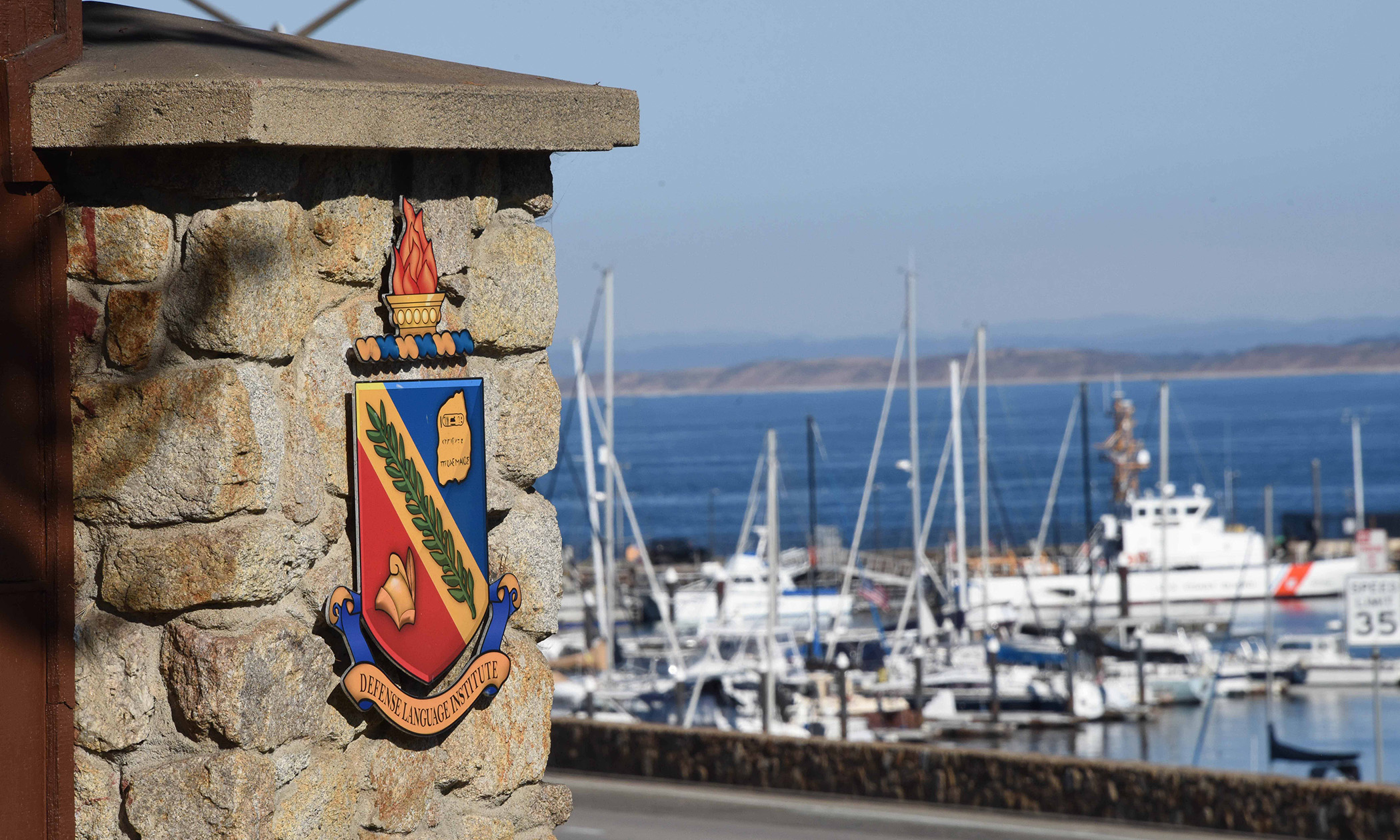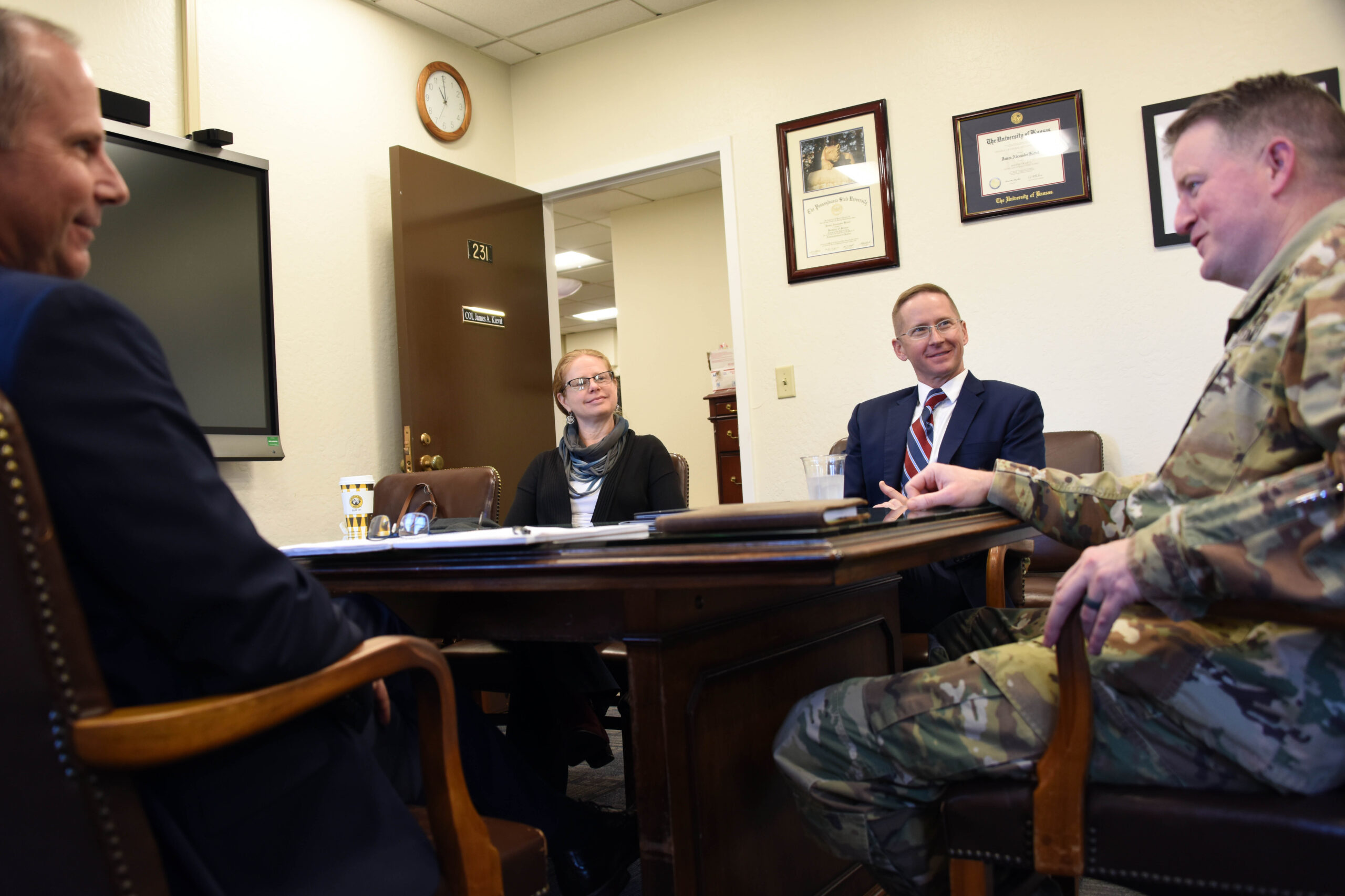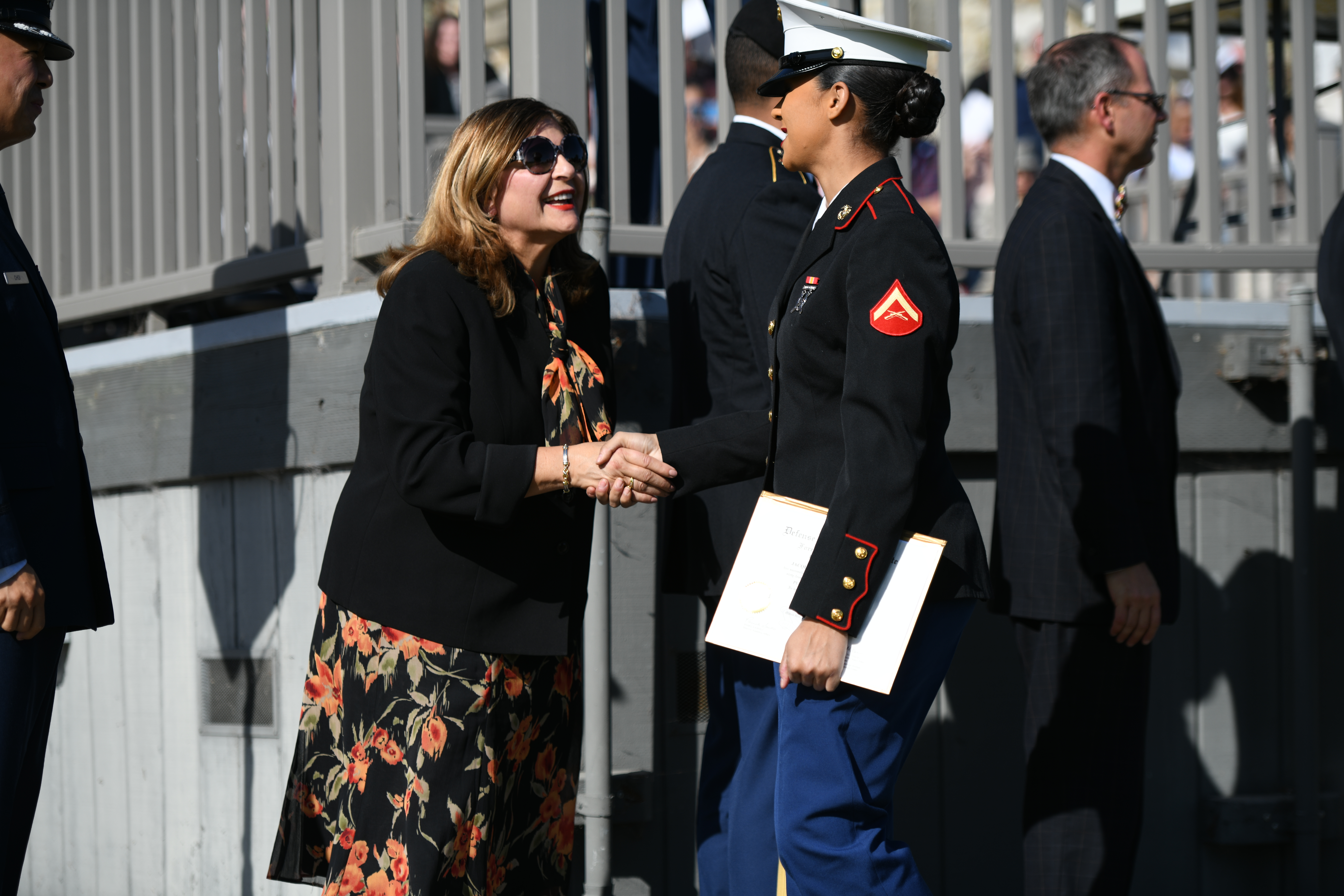The Defense Language Institute Foreign Language Center (DLIFLC) is one of the most unique members of the Accrediting Commission for Community and Junior Colleges (ACCJC). Located on the historic Presidio of Monterey in Monterey, California, the institute provides culturally based foreign language education, training, evaluation, and degrees for the Department of Defense globally.

Founded just six weeks before of Pearl Harbor in November 1941, the history of DLIFLC is unique and fascinating. As the U.S. entered World War II against Japan, the Army foresaw the need for learning Japanese and began recruiting second generation Japanese Americans. As the branches of the military identified the need for additional language skills in intelligence activities, a system developed that remains today – DLIFLC is operated by the United States Army with annually negotiated agreements with each branch of the military services to decide the allocation of students by branch and language. As the U.S. Military Commands see shifting priorities around the globe, the languages offered by DLIFLC, and the students allocated to each language, shift. Today, the languages offered include Chinese Mandarin, Arabic, Russian, French, Spanish, Indonesian, Japanese, Korean, Tagalog, and Persian Farsi.
The length of the courses are 36 to 64 weeks, depending on the difficulty of the language. Students enter DLIFLC after basic training from either the Army, Marines, Navy, Air Force and Coast Guard. They are housed either on the installation or off post, depending on their family status. The soldier-students study in class for six to seven hours a day, five days a week, and spend the remainder of their weekends and evenings mastering a language they have never spoken before. DLIFLC students are assigned to the program after an aptitude test, and should they pass their comprehensive examination at the end of their course of study, they are typically placed within military intelligence units. Many of the students go on to work for various government agencies after completing their tour of duty. In other words, DLIFLC students are highly valuable assets to ensuring the security of the United States. Deemed as one of the most difficult schools in the military, DLIFLC graduates are highly successful and often go on to obtain higher education degrees which can lead them to jobs in education or international business.
During a recent ACCJC visit, DLIFLC Commandant Col. James Kievit, Sgt. Maj. David Scott, the institute Provost Dr. Robert Savukinas, and Accreditation Liaison Officer Dr. Erin O’Reilly, shared student success stories that illustrated how service members become highly proficient in their target language. The utilization of technology in the classrooms, authentic materials directly from news outlets, and co-teaching, immerse students in the culture, history and customs of the countries they are learning about.
More than 2,000 students attend DLIFLC at any given time. The largest programs are Chinese Mandarin, Russian, Korean, Arabic and Persian Farsi. Students attend training in eight schools spread across the Presidio. Students benefit from a low student to teacher ratio generally 3:1-4:1, and individual class sections are generally capped at no more than eight students. This close attention from their approximately 1,000 instructors enables students to thrive despite the pace of the course.
The rigor of the academic model and its outcomes are essential to preparing service members for their future missions. Intensive foreign language instruction in an immersive training environment builds the critical skillset these students will need on the job protecting the nation. The language training in Monterey is strenuous, but when students leave the schoolhouse for the day, they are in an English-language environment, and live in service branch-specific barracks or in off-post housing. Recognizing that language students can benefit from being put in immersive environments where target language engagement can extend beyond the end of the class day and outside of the classroom walls, DLIFLC has developed an immersion program, sending students to various domestic and international sites for two- to four-week experiences.
One recent immersion participant from DLIFLC’s Persian Farsi program learned so much that by the time his immersion was over, “I found for the first time that my first thought was in Farsi.”

A student who successfully completes a full basic course in any of the languages offered in Monterey earns 45 college credits. These credits can be transferred to other institutions. In addition, students who transfer in credits or take advantage of credit by examination opportunities can receive an A.A. degree from DLIFLC. To date, DLIFLC has awarded over 19,000 A.A. degrees.
In addition to the basic program, for which DLIFLC is perhaps most well-known, DLIFLC also supports intermediate and advanced programs, both in Monterey and at language training detachments around the world. Successful graduates of these programs earn additional DLIFLC credits that, when combined with the fulfillment of other requirements, can result in the awarding of a B.A. degree from DLIFLC. The B.A. program is a recent addition, with the first degree awarded in April 2022.
To learn more about the Defense Language Institute Foreign Language Center, visit their website at www.dliflc.edu.












